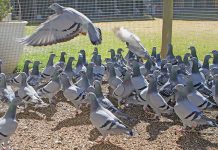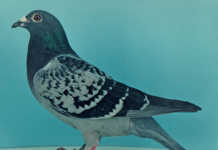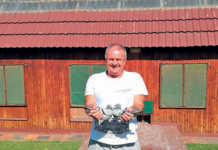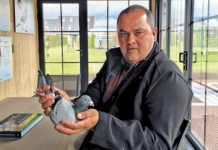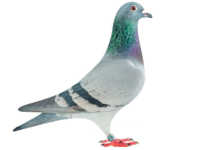As we mentioned before the distance flown is not the deciding factor when identifying a disastrous pigeon race event, but rather the speed and the losses. Just to refresh our memories: at a working pigeon racing event speeds of 1 200m/min to 1 250m/min are considered average. Nearing 1 300m/min and above, the race is considered fast-paced. Races bordering on 1 000m/min are tough and below 1 000m/min is considered extremely difficult.
As soon as we register a winning velocity of 1 000m/min and below, we know to expect losses. Fanciers may still get reasonable numbers of birds back from the race, but when the losses exceed 20% to 25% of pigeons entered, it should at best be classified as unsatisfactory. Losses of 50% or more are catastrophic.
Disastrous flights in perspective
To understand what causes a disastrous flight, let’s start by considering the distance flown. Fanciers generalise that as soon as racing pigeons are more than five hours on the wing in adverse weather conditions, fatigue begins to tax their reserves.
To maintain a high velocity over 1 000km is considered more difficult than over a flight of say, 400km, but it’s tolerable in normal conditions, providing the pigeons are fit and well-prepared.
In the first hours of the race, the pigeon uses the energy stored in its reserves. It then begins to digest its own fat and muscle fibre. As certain fats aren’t digested quickly, the absorption of protein from the muscles does the most damage, reducing speed and increasing fatigue. Water and rest then become a necessity. Another consideration is the known severity of the race. Some races are flown over flat terrain in clear visibility, but other routes are obstructed with mountain ranges, hills and bad weather conditions.
Flat terrain may have bad weather, but losses still shouldn’t be unnaturally high. Once the weather clears, it’s plain sailing. In such cases, the speed may be under 1 000m/min but the losses won’t be as severe. However, nasty headwinds can blow for hours at high speeds up to 100km/hour. If they’re accompanied by heat and high humidity, the birds are heading for trouble.
A new global trend over long distances
The electronic revolution has developed an impatient society. For years, pigeons were gradually prepared for marathon flights of 800km to 1 200km and they only raced these at two and five years of age. Today, in different parts of the world, a new breed of young birds is being developed to handle these distances as yearlings.
Although South Africa isn’t known for marathon pigeon racing, several fanciers have been able to breed pigeons that can handle bad weather and disastrous flights far better than others. The new challenge in pigeon racing is to develop all-rounders that race well as youngsters – true racing machines!


